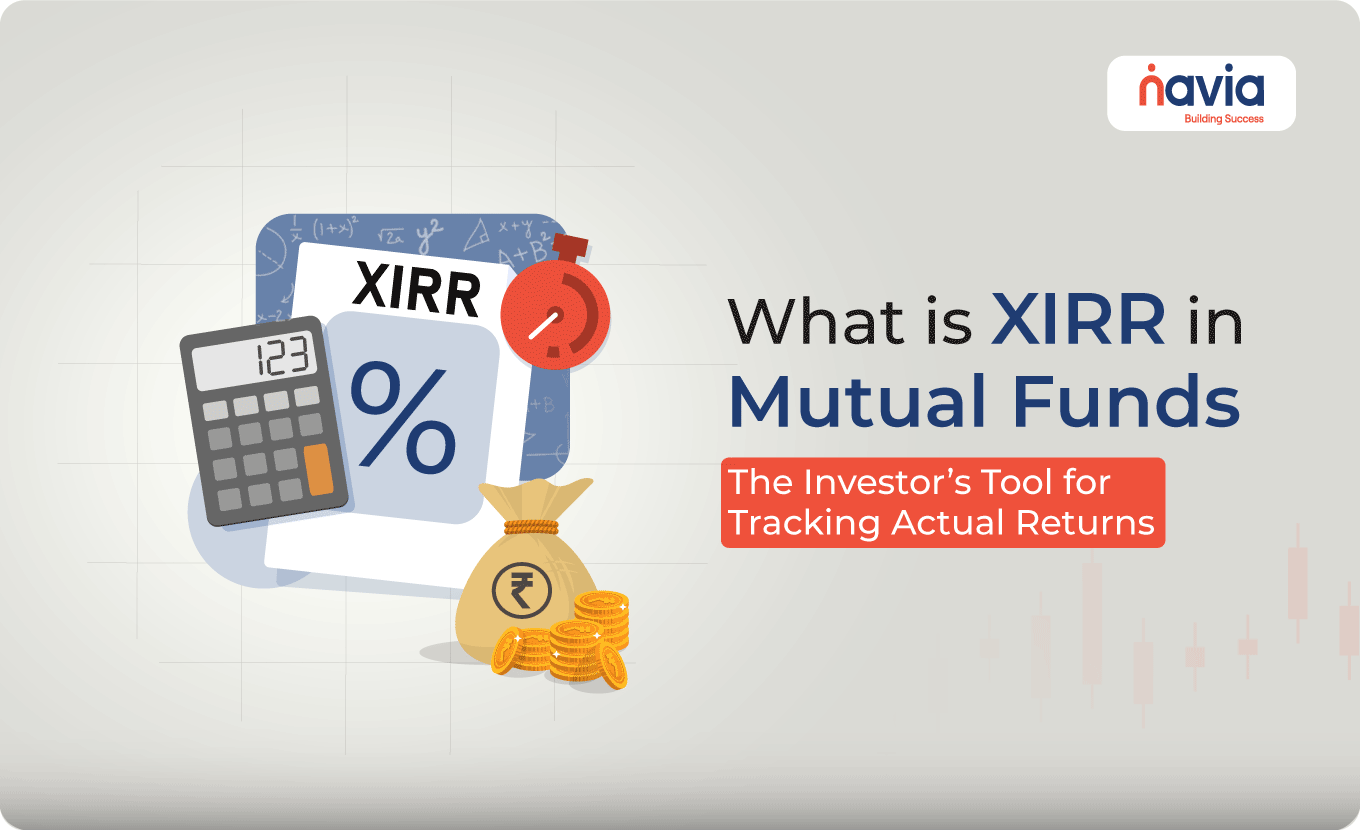What is XIRR in Mutual Funds and Why is it Important?

If you are planning to invest in mutual funds through SIPs (Systematic Investment Plans), calculating accurate returns is essential. So many investors analyze it in CAGR (Compound Annual Growth) but these don’t always reflect in real-world investments with irregular cash flows. Here is XIRR in mutual funds to get the complete attention.
Whether you are a new or seasoned investor in mutual funds, it is important to understand that XIRR (Extended Internal Rate of Return) will help to assess your fund’s performance easily. In this blog, we break down the meaning of XIRR in mutual funds, the calculation and why it matters.
What is XIRR?
The full form of XIRR is Extended Internal Rate of Return. It is considered a method to calculate returns when investments are made at different intervals and amounts like SIPs and lump sum transactions. XIRR will show the annualized return on your investment. Compared to CAGR it will give a more realistic picture of investments they are in non-uniform.
In simple words, XIRR will tell you how much your mutual fund investment has grown annually by considering all your investment and withdrawals.
How to Calculate XIRR in Mutual Fund?
You can easily calculate XIRR in mutual funds by using Excel. Here you can see the step-by-step process of the calculation;
Step 1: List out all your transactions like investments, purchases, and redemptions in the first column.
Step 2: In the second column, add the date of the transaction.
Step 3: Then you have to mention the current value of your holding and the current date in the last row.
Step 4: Now use the XIRR formula in excel which is like;
= XIRR (values, date, guess)
Choose the cash flow values along with payment dates. The date column represents when each investment was made; the ‘guess’ parameter is optional—if you leave it blank, Excel will automatically use 0.1 (or 10%) as the default guess.
Example;
Suppose you invest ₹5000 on Jan 1, 2024, another ₹5000 on July 1, 2024, and the current value of your mutual fund is ₹12,000 as on Jan 1, 2025.
For the calculation of XIRR in excel you must list out the date and amount like, this;
| Date | Amount |
| 01-01-2024 | -5000 |
| 01-07-2024 | -5000 |
| 01-01-2025 | 12000 |
Now use the formula in excel;
=XIRR (B2:B4, A2:A4)
Result: Approx. 18.8% XIRR, which is your annualized return.
Why is XIRR Good for Mutual Funds?
Many investors choose monthly SIPs or Lump Sum investments at different times. The variations of cash flows will make the evaluation performance process hard by using basic return metrics. Here we can see how XIRR shines;
🠖 It factors in irregular investment timing
🠖 Calculate precise annualized returns
🠖 Useful for SIPs, SWPs, and partial redemptions
So, to get a clear picture of how your mutual fund investment is performing over time, XIRR is the best companion for you.
How Does XIRR Work in Mutual Funds?
XIRR plays a vital role in the calculation of internal rate of return when investments are not in uniform. We know in each SIP mutual fund is treated as a separate investment, the final value is considered a redemption, and the formula calculates the annual growth rate of the investment. Unlike CAGR, XIRR calculations are real-life scenarios, that multiple inflows and one or more outflows.
Why is XIRR in Mutual Funds Important?
In below you can see a few key reasons why XIRR is important in mutual fund investing.
| Accuracy | Reflect actual investment performance with date-specific accuracy |
| SIP-Friendly | A perfect choice for SIP-based investments |
| Comparison Tool | Helps compare different funds or investment strategies fairly |
| Tax Planning | Understand long-term vs short-term gains |
| Goal Tracking | You can see your mutual fund is meeting your financial goals or not |

Benefits of Calculate XIRR in Mutual Fund
Some of the notable benefits are listed below;
🠖 Accuracy: It provides a precise measurement of returns by calculating both time and cash flow.
🠖 Custom Return Calculation: The method is useful for both SIP and lump sum investors.
🠖 Risk Assessment: Providing a comprehensive view of returns and easy understanding of risks.
🠖 User-Friendly Tools: You can calculate XIRR in mutual funds via Excel easily.
🠖 Comparative Analysis: It offers meaningful comparisons between different investment options, that help to make informed decisions.
Difference Between XIRR vs CAGR
| Feature | XIRR | CAGR |
| Cash Flows | Handles multiple & irregular flows | Assumes single investment |
| Investment Type | Best for SIP | Suitable for lump-sum |
| Accuracy | More accurate | Less accurate for multiple investments |
| Tools Needed | Excel/Apps | Simple calculator |
| Usability | Advanced | Basic |
| Formula | =XIRR (values, dates, <guess>) | CAGR = ((Ending Value / Beginning Value) ^ (1 / Number of Years)) – 1 |
Conclusion
Understanding XIRR in mutual funds for tracking your returns accurately, especially if you invest via SIPs. Through this method you can get an annualized, real-world return figure that will represent a clear figure compared to the CAGR. Use XIRR not just to calculate returns, but for making informed decisions, plan accordingly and invest smarter.
Take control of your investments today and find new paths for your financial success with Navia Markets.
Do You Find This Interesting?
Frequently Asked Questions
What is XIRR in Mutual Funds?
XIRR stands for Extended Internal Rate of Return that calculates the annualized return for investments made at different times and amounts, typically used in SIPs.
How to calculate XIRR in mutual fund?
To calculate XIRR in Mutual Funds use Excel, input the cash flows (investments as negative, returns as positive) and corresponding dates, then use the formula =XIRR (values, dates).
What is the difference between XIRR and CAGR?
The main difference between XIRR and CAGR is XIRR handles multiple investments at different times, while CAGR only works for a single investment over time. XIRR is more accurate for SIPs.
What is a good XIRR in mutual funds?
A good XIRR in mutual funds is generally considered between 10–15% for equity mutual funds, depending on market conditions and investment duration.
Is XIRR better than CAGR?
Yes, XIRR gives a clearer picture of returns made at various intervals, while CAGR is ideal for one-time lump-sum investments.
DISCLAIMER: Investments in the securities market are subject to market risks, read all the related documents carefully before investing. The securities quoted are exemplary and are not recommendatory. Brokerage will not exceed the SEBI prescribed limit.






